
Gothic fiction, sometimes called Gothic horror, is a loose literary aesthetic of fear and haunting. The name refers to Gothic architecture of the European Middle Ages, which was characteristic of the settings of early Gothic novels.

Horror is a genre of fiction that is intended to disturb, frighten or scare. Horror is often divided into the sub-genres of psychological horror and supernatural horror, which are in the realm of speculative fiction. Literary historian J. A. Cuddon, in 1984, defined the horror story as "a piece of fiction in prose of variable length... which shocks, or even frightens the reader, or perhaps induces a feeling of repulsion or loathing". Horror intends to create an eerie and frightening atmosphere for the reader. Often the central menace of a work of horror fiction can be interpreted as a metaphor for larger fears of a society.

Montague Rhodes James was an English author, medievalist scholar and provost of King's College, Cambridge (1905–1918), and of Eton College (1918–1936). He was Vice-Chancellor of the University of Cambridge (1913–1915).

Ramsey Campbell is an English horror fiction writer, editor and critic who has been writing for well over fifty years. He is the author of over 30 novels and hundreds of short stories, many of them winners of literary awards. Three of his novels have been adapted into films.

Ann Radcliffe was an English novelist and a pioneer of Gothic fiction. Her technique of explaining apparently supernatural elements in her novels has been credited with gaining respectability for Gothic fiction in the 1790s. Radcliffe was the most popular writer of her day and almost universally admired; contemporary critics called her the mighty enchantress and the Shakespeare of romance-writers, and her popularity continued through the 19th century. Interest has revived in the early 21st century, with the publication of three biographies.
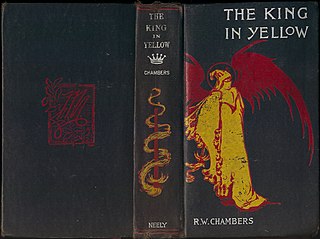
The King in Yellow is a book of short stories by American writer Robert W. Chambers, first published by F. Tennyson Neely in 1895. The British first edition was published by Chatto & Windus in 1895.
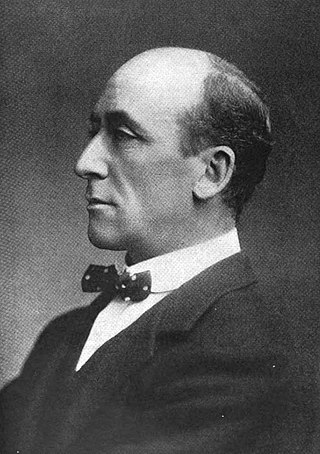
Algernon Henry Blackwood, CBE was an English broadcasting narrator, journalist, novelist and short story writer, and among the most prolific ghost story writers in the history of the genre. The literary critic S. T. Joshi stated, "His work is more consistently meritorious than any weird writer's except Dunsany's" and that his short story collection Incredible Adventures (1914) "may be the premier weird collection of this or any other century".
Fantastique is a French term for a literary and cinematic genre and mode that is characterized by the intrusion of supernatural elements into the realistic framework of a story, accompanied by uncertainty about their existence. The concept comes from the French literary and critical tradition, and is distinguished from the word "fantastic", which is associated with the broader term of fantasy in the English literary tradition. According to the literary theorist Tzvetan Todorov, the fantastique is distinguished from the marvellous by the hesitation it produces between the supernatural and the natural, the possible and the impossible, and sometimes between the logical and the illogical. The marvellous, on the other hand, appeals to the supernatural in which, once the presuppositions of a magical world have been accepted, things happen in an almost normal and familiar way. The genre emerged in the 18th century and knew a golden age in 19th century Europe, particularly in France and Germany.
In critical theory, abjection is the state of being cast off and separated from norms and rules, especially on the scale of society and morality. The term has been explored in post-structuralism as that which inherently disturbs conventional identity and cultural concepts. Julia Kristeva explored an influential and formative overview of the concept in her 1980 work Powers of Horror: An Essay on Abjection, where she describes subjective horror (abjection) as the feeling when an individual experiences or is confronted by the sheer experience of what Kristeva calls one's typically repressed "corporeal reality", or an intrusion of the Real in the Symbolic Order.

Danse Macabre is a 1981 non-fiction book by Stephen King, about horror fiction in print, TV, radio, film and comics, and the influence of contemporary societal fears and anxieties on the genre. When the book was republished King included a new Forenote dated June 1983. And when the book was republished on February 23, 2010, it included an additional new forenote in the form of a longer essay entitled "What's Scary".
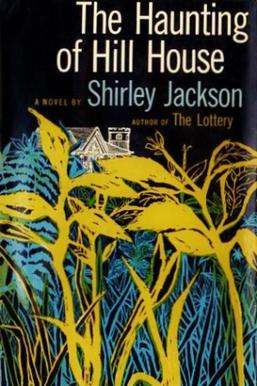
The Haunting of Hill House is a 1959 gothic horror novel by American author Shirley Jackson. It was a finalist for the National Book Award and has been made into two feature films and a play, and is the basis of a Netflix series.

The Italian, or the Confessional of the Black Penitents (1796) is a Gothic novel written by the English author Ann Radcliffe. It is the last book Radcliffe published during her lifetime. The Italian has a dark, mysterious, and somber tone which fixates on the themes of love, devotion, and persecution during the time period of Holy Inquisition. The novel deals with issues prevalent at the time of the French Revolution, such as religion, aristocracy, and nationality. Radcliffe's renowned use of veiled imagery is considered to have reached its height of sophistication and complexity in The Italian; concealment and disguise are central motifs of the novel. The novel is noted for its extremely effective antagonist, Father Schedoni, who influenced the Byronic characters of Victorian literature.

The Great God Pan is a horror and fantasy novella by Welsh writer Arthur Machen. Machen was inspired to write The Great God Pan by his experiences at the ruins of a pagan temple in Wales. What would become the first chapter of the novella was published in the magazine The Whirlwind in 1890. Machen later extended The Great God Pan and it was published as a book alongside another story, "The Inmost Light", in 1894. The novella begins with an experiment to allow a woman named Mary to see the supernatural world. This is followed by an account of a series of mysterious happenings and deaths over many years surrounding a woman named Helen Vaughan. At the end, the heroes confront Helen and force her to kill herself. She undergoes a series of unearthly transformations before dying and she is revealed to be a supernatural entity.
Joseph Payne Brennan was an American writer of fantasy and horror fiction, and also a poet. Of Irish ancestry, he was born in Bridgeport, Connecticut and he lived most of his life in New Haven, Connecticut, and worked as an Acquisitions Assistant at the Sterling Memorial Library of Yale University for over 40 years. Brennan published several hundred short stories, two novellas and reputedly thousands of poems. His stories appeared in over 200 anthologies and have been translated into German, French, Dutch, Italian and Spanish. He was an early bibliographer of the work of H. P. Lovecraft.
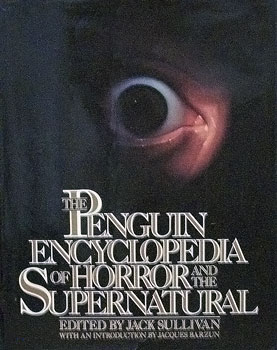
The Penguin Encyclopedia of Horror and the Supernatural is a reference work on horror fiction in the arts, edited by Jack Sullivan. The book was published in 1986 by Viking Press.

The uncanny is the psychological experience of an event or individual being not simply mysterious, but rather frightening in a way that feels oddly familiar. This phenomenon is used to describe incidents where a familiar thing or event is encountered in an unsettling, eerie, or taboo context.

A horror fiction magazine is a magazine that publishes primarily horror fiction with the main purpose of frightening the reader. Horror magazines can be in print, on the internet, or both.
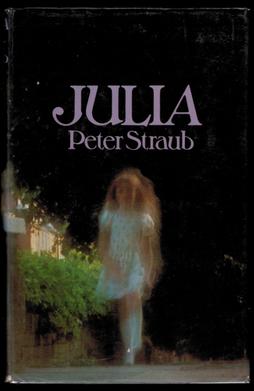
Julia is a 1975 novel by American writer Peter Straub. The work is Straub's first novel to deal with the supernatural and was published through Coward, McCann & Geoghegan. Julia was later adapted into the 1977 film Full Circle, starring Mia Farrow.
Devendra Varma was an expert on Gothic literature. He was particularly well known for The Gothic Flame: being a history of the Gothic Novel in England and The Evergreen Tree of Diabolical Knowledge, and also for making available hundreds of Gothic tales.
Irish Gothic literature developed in the eighteenth and nineteenth centuries. Most of the writers were Anglo-Irish. The period from 1691 to 1800 was marked by the dominance of the Protestant Ascendancy, Anglo-Irish families of the Church of Ireland who controlled most of the land. The Irish Parliament, which was almost exclusively Protestant in composition, passed the Penal Laws, effectively disenfranchising the Catholic majority both politically and economically. This began to change with the Acts of Union 1800 and the concomitant abolition of the Irish Parliament. Following a vigorous campaign led by Irish lawyer Daniel O'Connell, Westminster passed the Roman Catholic Relief Act 1829 removing most of the disabilities imposed upon Catholics.

















